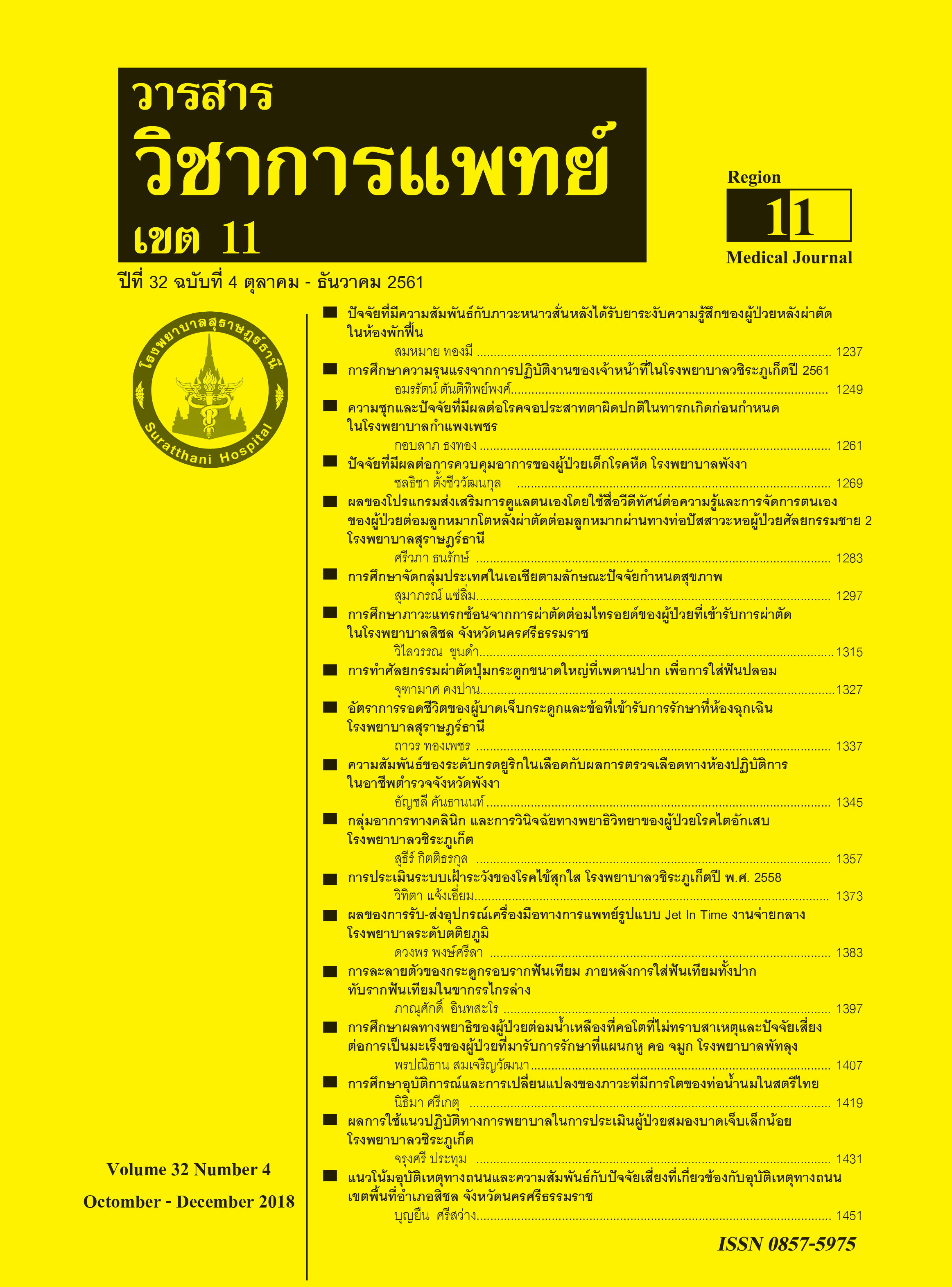Surgical Removal of large torus palatinus to put dentures
Keywords:
Torus palatinusAbstract
The elderly often have the problem of occlusion. Chewing is not easy ,due to the loss of some teeth or losing teeth to the mouth. So there is need for dentures to replace natural teeth are removed. In order to enhance occlusion. Prior to the dentist will make dentures. An intraoral examination must be thoroughly. For diagnosis and treatment planning. In the case of patients with the irregular bone in the oral cavity. Which can be divided into three types according to the common areas are: 1. Palatine called torus palatinus 2. inside of the lower jaw, called a torus mandibularis 3. Outside of the jaw bone is called a buccal exostosis,found near the gum ridge cheeks. In Thailand was reported,patients with torus have 31.9% and is commonly found in adults. The irregular bone is caused by a thickening of the bone surface. The growth of abnormal bone surface slowly without pain. In terms of treatment, If the bones are small and do not cause problems. It is not necessary to be treated. But if you want to wear removable dentures. Then the position of the denture base to be placed over the button, these bones. This can cause ulceration from pressure of dentures. You should consider surgery to remove the bone out. The dentist must be an assessor. Considering the pros and cons of various co-factors. Involving patients with diseases such as medications that patients receive.Collaborative treatment will make dentures successful
References
Odontoestomatol Esp; 1990;50:47-50, 53-6.
Apinhasmit W, Jainkittivong A, Swasdison S.Torus palatinus and torus mandibularis in Thai population. ScienceAsia; 2002;28:105-11.
Jainkittivong A, Langlais RP. Buccal and palatal exostoses: prevalence and concurrence with tori. Oral Surg Oral Med Oral Pathol Oral Radiol Endod; 2000;90:48-53.
Al-Bayaty HF, Murti PR, Matthews R, Gupta PC. An epidemiological study of tori among 667 dental outpatients in Trinidad & Tobago,West Indies. Int Dent J; 2001;51:300-4.
Bruce I, Ndanu TA, Addo ME. Epidemiological aspects of oral tori in a Ghanaian community. Int Dent J; 2004;54:78-82.
Sonnier KE, Horning GM, Cohen ME. Palatal tubercles, palatal tori, and mandibulartori: prevalence and anatomical features in a U.S. population. J Periodontol; 1999;70:329-36.
Kerdpon D, Sirirungrojying S. A clinical study of oral tori in southern Thailand: prevalence and the relation to parafunctional activity. Eur J Oral Sci; 1999;107:9-13.
Eggen S. Torus mandibularis: an estimation of the degree of genetic determination. Acta Odontol Scand; 1989;47:409-15
Martínez-González JM. Tumores benignos de los maxilares [Benign tumors of the maxilla]; 1998 ; 2 : 627-39
Reichart PA, Neuhaus F, Sookasem M. Prevalence of torus palatinus and torus mandibularis in Germans and Thai. Community Dent Oral Epidemiol; 1988;16:61-4.
Sirirungrojying S, Kerdpon D. Relationship between oral tori and temporomandibular disorders. Int Dent J; 1999;49:101-4.
Peterson L.J., Ellis E.III, Hupp J.R. and Tucker M.R.:Contemporary Oral and Maxillofacial Surgery 4th edition, Mosby Year Book,Inc; 2003,PP.248 –304
McGowan D.A.:An Atlas of Minor Oral Surgery Principle and Practice 2nd edition,Martin Duntiz Ltd.;1999,PP.73 – 84
Fragiskos F.D.;Oral Surgery 1st edition, Springer Berlin Heidelberg;2007, PP.243 - 280






